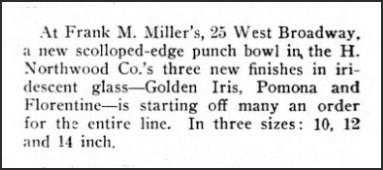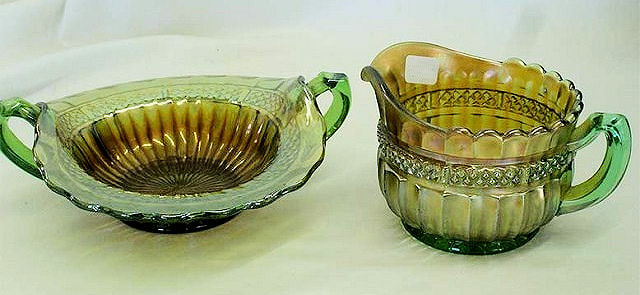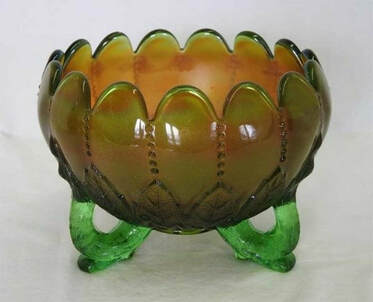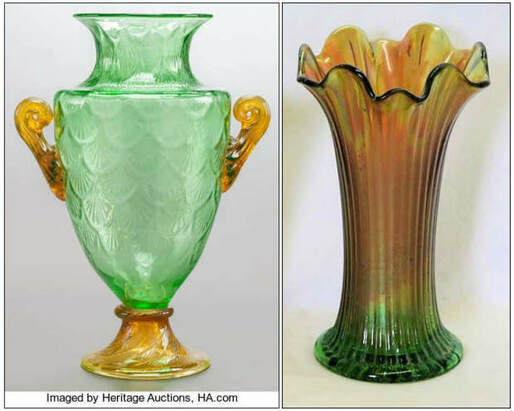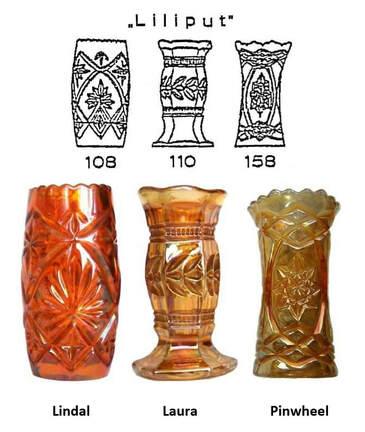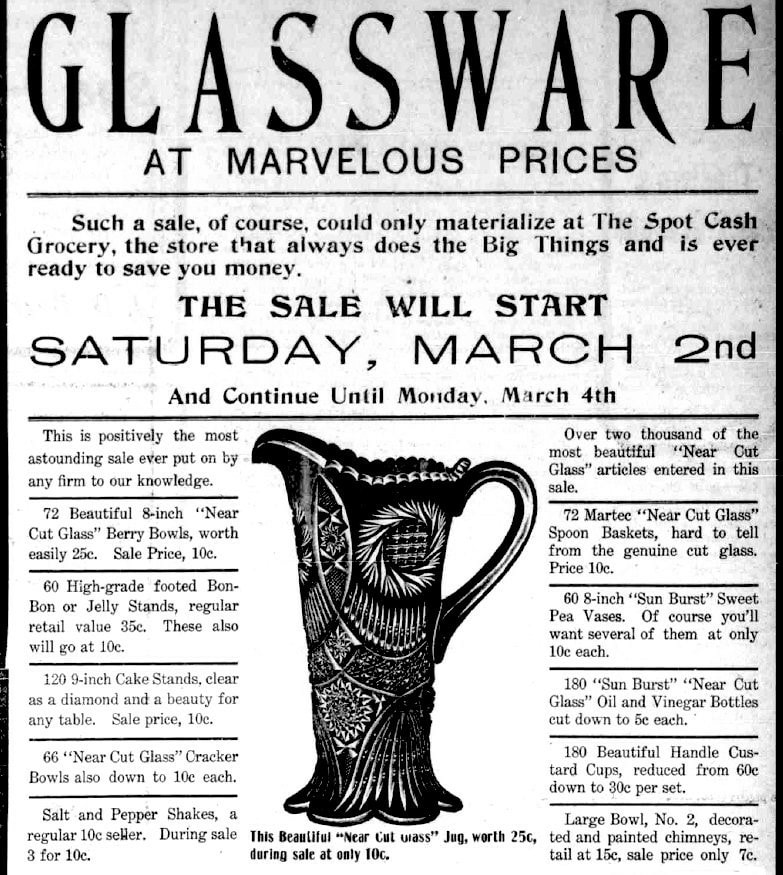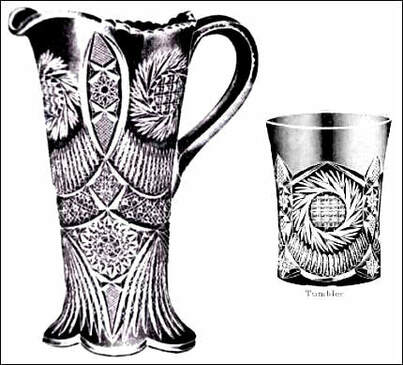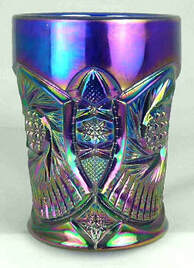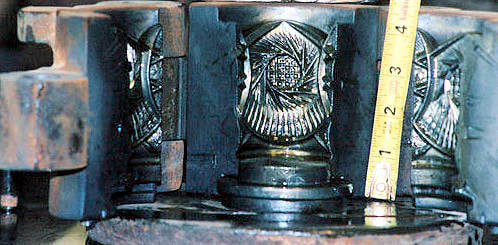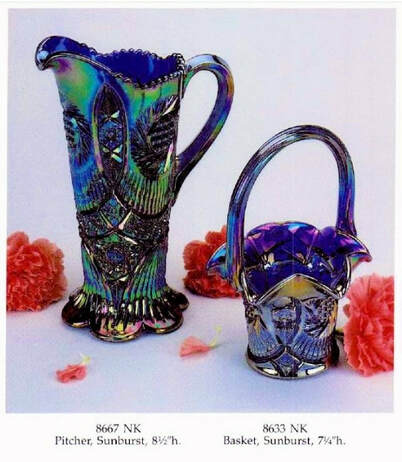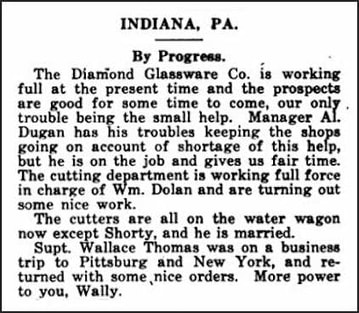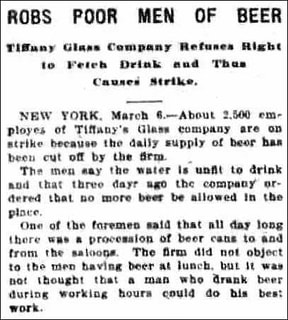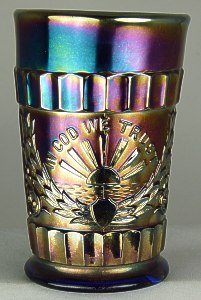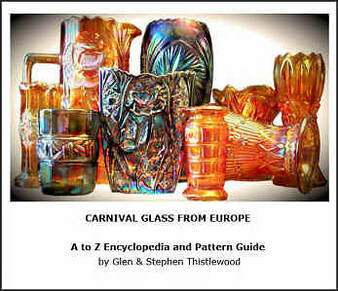NetworK ezine Issue 46. March 2019
Totally Devoted to Carnival Glass
Pomona and the Great Alaskan Mystery
Are you familiar with the term “Alaskan”? It’s usually used to describe Northwood’s early, green glass that has a bronzey-marigold iridescence (which often only partially covers the green base glass). A mixed bag of phrases is used: Alaskan Treatment – Alaskan Iridescence – Alaskan Green – Alaskan Effect – Alaskan Finish or simply Alaskan (or even Alaska).
Are you familiar with the term “Alaskan”? It’s usually used to describe Northwood’s early, green glass that has a bronzey-marigold iridescence (which often only partially covers the green base glass). A mixed bag of phrases is used: Alaskan Treatment – Alaskan Iridescence – Alaskan Green – Alaskan Effect – Alaskan Finish or simply Alaskan (or even Alaska).
|
Did Northwood actually coin the term “Alaskan” or did it come from somewhere else? In fact, the Northwood Co., devised three very specific terms for their early iridescent effects; Golden Iris, Pomona and Florentine. They were written about in the 1910 glass trade journals, and featured in the ads of Northwood’s agent, Frank Miller. Here is an extract from the February 1910 “Pottery, Glass and Brass Journal”. |
Above: Northwood Lustre Flute bonbon and creamer in what many collectors call “Alaskan”.
Courtesy Seeck Auctions. |
Golden Iris was marigold, Florentine was probably dark iridescence on purple or blue base glass, but what was Pomona?
|
We think that Pomona might actually have been Northwood’s own name for that bronzey-marigold on green glass that collectors are calling “Alaskan”. And it’s very possible that it was intended to be an affordable version of an upmarket Steuben line called Pomona – green glass with mainly orange/amber additions (not iridised), as shown here, centre right. Northwood Leaf and Beads rose bowl in green base glass with partial bronzey-marigold iridescence, courtesy Seeck Auctions.
|
Above: On the left is a Steuben green glass Pomona vase, c 1900 (courtesy Heritage Auctions). On the right, a Northwood Fine Rib vase in green base glass with partial marigold iridescence (courtesy Seeck Auctions).
|
Where did the name "Alaskan" come from?
We think that the answer simply lies in a 1919 ad for a Minnesota mail order firm’s General Catalogue. To see the full version of this enigmatic puzzle, and view all the pictorial evidence and clues that came together in this tale, go here: “The Great Alaskan Mystery”
We think that the answer simply lies in a 1919 ad for a Minnesota mail order firm’s General Catalogue. To see the full version of this enigmatic puzzle, and view all the pictorial evidence and clues that came together in this tale, go here: “The Great Alaskan Mystery”
|
Liliput
Readers of our “Carnival Glass from Europe Encyclopedia & Pattern Guide” will be familiar with the exquisite miniature vases made by the renowned Polish glass maker, Hortensja. They will also know that three different patterns of the tiny “Liliput” vases were made, but when we went to press, only two of those tiny beauties had been found in Carnival – the Lindal vase (3.25” high) and the Laura vase (3.5” high). And now, just reported, the miniature Pinwheel vase has also been discovered in Carnival, by John Hodgson. Let’s ask John to take up the story, as he reported it in our Carnival Glass Network Facebook Group on February 20th: “A small package arrived in the post, today, containing the final piece needed to complete my Hortensja ‘Liliput’ vase collection. It’s taken over 5 years to finally track down the tiny, 3.2” high Pinwheel vase.” This is an amazing discovery and we offer our many congratulations to John. Image and photos (right) courtesy of John Hodgson. |
Sunburst, aka Pinwheel and Hobstar
This splendid ad (below on the left) for the Spot Cash Grocery in a 1912 Kentucky newspaper, features a McKee “Sunburst” pitcher, described in the caption as a “Near Cut Glass” Jug.
This splendid ad (below on the left) for the Spot Cash Grocery in a 1912 Kentucky newspaper, features a McKee “Sunburst” pitcher, described in the caption as a “Near Cut Glass” Jug.
Fast forward to the 1980s
Fenton’s acquisition of many of the old McKee moulds, saw the entry of the pitcher and tumbler into what they called their Cobalt Marigold line (Fenton's product code "NK"), along with other shapes and patterns. Note the butter in the Sunburst pattern was made by L.E. Smith in Contemporary Carnival.
Below left is a Fenton Cobalt Marigold Sunburst tumbler (it is a vibrant blue colour), which was made in 1985.
Fenton’s acquisition of many of the old McKee moulds, saw the entry of the pitcher and tumbler into what they called their Cobalt Marigold line (Fenton's product code "NK"), along with other shapes and patterns. Note the butter in the Sunburst pattern was made by L.E. Smith in Contemporary Carnival.
Below left is a Fenton Cobalt Marigold Sunburst tumbler (it is a vibrant blue colour), which was made in 1985.
We have several other Fenton Cobalt Marigold catalogue pages elsewhere - here is the link: Fenton's Cobalt Marigold.
|
On the Water Wagon (except for Shorty that is). The snippet on the right is from the November 1916 “The American Flint” (the official magazine of the American Flint Glass Workers’ Union of North America).The glass factory referred to is Diamond Glassware, formerly Dugan Glass Company. The reference to being “on the water wagon” (i.e. abstaining from alcohol) perhaps indicated that inebriation might have been a previous problem. The practice of drinking beer was clearly not unusual - and not surprising given the working conditions of extreme heat and manual exertion! Here (below) is a 1904 report in the Omaha Daily Bee that covered working conditions at Tiffany's glassworks. We just love the image of a continuous procession of workers carrying cans of beer from the local saloons to the factory floor ... and also the (very under-stated) comment that men who drank beer in working hours were not able to do their best work. Maybe this would explain the slight "lean" on our blue Dugan God and Home tumbler! |
Carnival Glass from Europe e-book
Can you believe that almost 800 Carnival Glass patterns and over 50 different makers are identified in our Carnival Glass from Europe!
Can you believe that almost 800 Carnival Glass patterns and over 50 different makers are identified in our Carnival Glass from Europe!
|
That is a truly amazing output. And it was produced not only for the local market, but also for export around the world. Now, with the massive use of online sales and auctions, European Carnival can - and has - turned up almost anywhere. So, if you are interested in Classic Carnival, this is essential reading for you. It is in an easy-to-read PDF format, clearly set out with a wealth of images and catalogue illustrations. It is available without delay by a downloadable file. If you prefer, we can send it by post on a CD, USB/flash drive, or a Micro/full size SD card. To find out more and to order your e-book go here: Carnival Glass from Europe (or click on the image on the right). This is what has been said about this new e-book: … an incredible amount of information, catalogue illustrations and photos … the illustrations make it all easily comprehensible … … a “must have” for any Carnival Glass collector … the most amazing reference work … a real stunner … … European Carnival Glass has finally been given the platform it has long deserved. |
Privacy and the use of your information: we only use your name and email address to send you your FREE Carnival Glass NetworK ezine. We will not share your name or email address with anyone else, or use it for any other purpose. You can change your mind about receiving your NetworK ezine at any time by clicking the unsubscribe link at the foot of every issue, or by emailing us at [email protected]
Join us on Facebook
We invite you and your friends to join us all on NetworK's fast growing and very active Facebook Group (link is below), and if you have missed any of the previous issues of NetworK and NetworK Specials, they are all here: Back Issues.
We invite you and your friends to join us all on NetworK's fast growing and very active Facebook Group (link is below), and if you have missed any of the previous issues of NetworK and NetworK Specials, they are all here: Back Issues.

